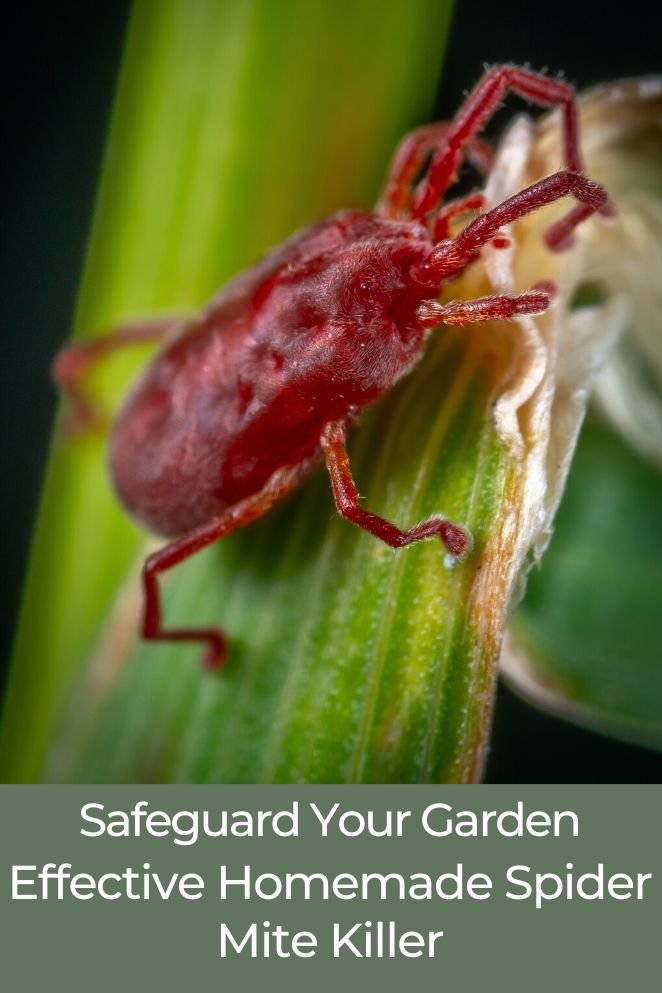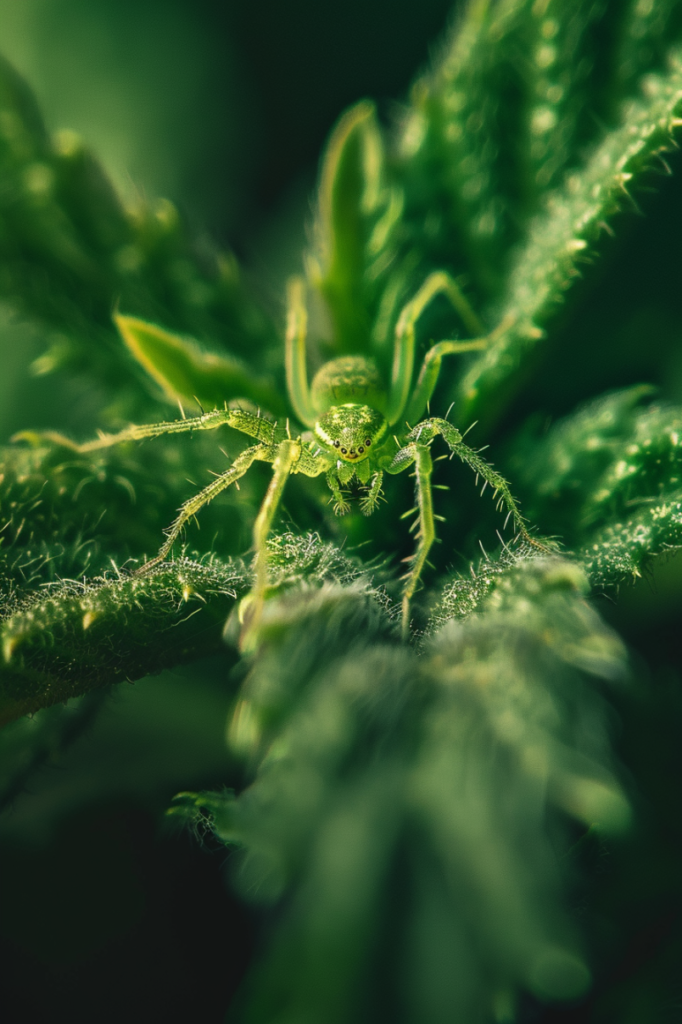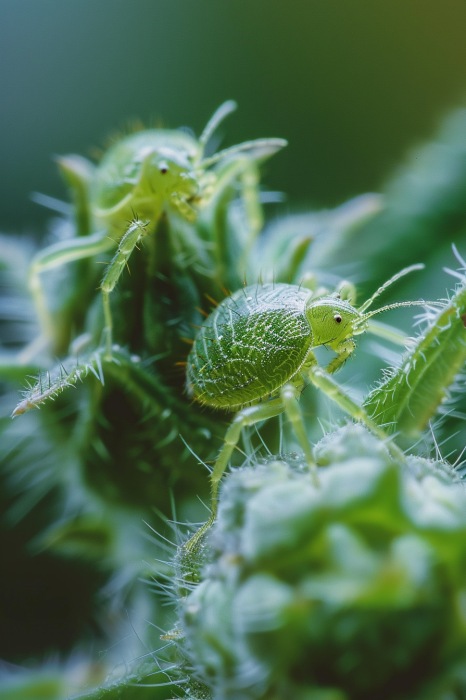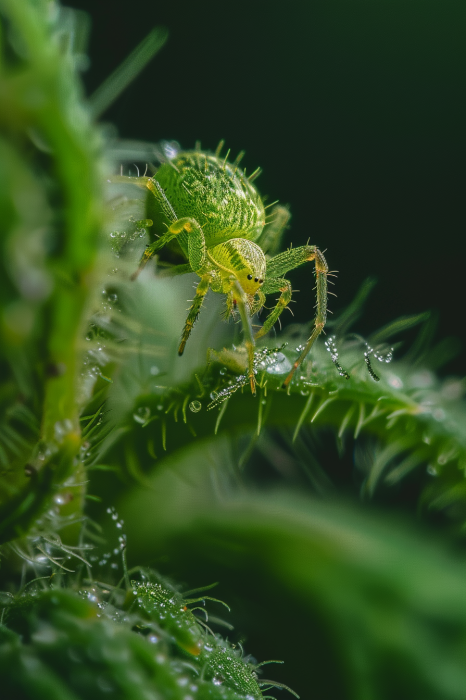
Hey there, fellow plant enthusiasts!
Are you tired of those pesky spider mites wreaking havoc on your precious greenery?
Well, fret no more because today, we’re diving into the world of homemade spider mite killers.
Say goodbye to those miniature villains and hello to healthier, happier plants!
What are Spider Mites
Spider mites are tiny, eight-legged pests that belong to the arachnid class, making them relatives of spiders, ticks, and scorpions, rather than insects.
There are over 1,600 species of spider mites, but the most common ones that affect plants include the two-spotted spider mite and the red spider mite.
They are minuscule, making them difficult to see with the naked eye.
However, their presence can be identified by the damage they cause to plants and the presence of webbing.
Here are some key characteristics of spider mites:
- Size: They are very small, typically less than 1/20 inch long.
- Color: Their color can vary depending on the species, but they are often red, green, yellow, orange, or brown.
- Body: They have an oval-shaped body with eight legs.
- Habitat: They are most commonly found on the undersides of leaves, where they feed on plant sap.
- Webbing: Many spider mite species produce fine silk webbing, which can be a telltale sign of an infestation.

How To Identify Spider Mite Damage
Identifying spider mite damage on your plants requires a keen eye and attention to detail. Here are some key signs to look out for:
- Read also: A DIY Guide to Spider Mite Spray
- Read also: Unveiling Vinegar For Slug Control
Stippling
This is the most common early sign. Look for tiny, pale yellow or white speckles, particularly on the upper surface of the leaves, between the veins.
Bronzing or yellowing
As the infestation progresses, the stippling may become more extensive, and the affected areas may turn brown, bronze, or yellowish.
Webbing
Fine, almost transparent webbing on the undersides of leaves, especially in areas with high mite populations.
This is a telltale sign of spider mites and distinguishes them from other pests like thrips or aphids.
Leaves with a dusty or gritty feeling
This can be caused by accumulated mite excrement, cast skins, and dead mites.
Shed skins of mites (cast skins) may accumulate on the leaves, serving as further evidence of an infestation.
Distorted growth and reduced plant vigor
As spider mite populations multiply and damage accumulates, affected plants may exhibit symptoms of stress, including stunted growth, wilted foliage,leaf drop, and reduced overall vigor.

Homemade Spider Mite Killer
Homemade spider mite killers typically utilize natural ingredients that are effective at controlling spider mite infestations without resorting to harsh chemicals.
Here are some common ingredients used in homemade spider mite killers:
Garlic and onions
Garlic contains sulfur compounds that are toxic to spider mites and other pests.
Infusing garlic cloves or garlic powder in water and spraying it onto plants can help to repel and kill spider mites.
Onions have been used as a repellent due to their strong odor.
Hydrogen peroxide
Hydrogen peroxide is sometimes used as a homemade remedy for controlling spider mites because it has properties that can help combat pests and pathogens.
It’s important to note that while hydrogen peroxide has certain benefits, it’s not highly effective at directly killing spider mites.
Its impact on spider mites can vary depending on factors like concentration, mite stage, and the extent of the infestation.
Although hydrogen peroxide may not be the most potent miticide for spider mites, it can still serve a useful purpose in plant care.
It can help remove debris and prevent secondary infections on plants, indirectly contributing to spider mite control.
Eucalyptus oil
Eucalyptus oil is known for its effectiveness in managing spider mites because of its potent aroma and insecticidal properties.
However, it’s crucial to exercise caution when using it as it can be harmful to certain plants.
Isopropyl alcohol
Rubbing alcohol, also known as isopropyl alcohol, can be a useful homemade solution for managing spider mites.
Its drying effects and capacity to dissolve the protective wax layer on spider mites can aid in eradicating these pests.
However, it’s important to note that rubbing alcohol may have adverse effects on certain plants, so it’s wise to conduct a small-scale test before widespread application.
Neem oil spray
Neem oil is a natural pesticide derived from the neem tree and can be effective against spider mites.
Mix a tablespoon of neem oil with a few drops of liquid soap and a quart of water. Shake well and spray on affected plants, making sure to cover both sides of the leaves.
Castile soap
Castile soap, made from natural ingredients like olive oil, is an effective and environmentally friendly option for controlling spider mites.
This solution disrupts the mites’ bodies and suffocates them.
Liquid kelp
Liquid kelp, derived from seaweed, is known for its beneficial properties in gardening, including its ability to boost plant health and resilience against pests.
While it may not directly kill spider mites, it can help strengthen plants, making them more resistant to infestations.

What are Pros and Cons Using Homemade Spider Mite Killer
Pros
Natural approach
Homemade spider mite killers offer a natural alternative to chemical pesticides, which can be safer for your plants, beneficial insects, and the environment.
Cost-effective
Homemade solutions are often more budget-friendly than commercial products, as they utilize common household ingredients.
Gentle on plants
Homemade remedies typically use mild ingredients that are less likely to harm your plants compared to harsh chemicals found in some commercial pesticides.
This gentleness can help maintain the health and vitality of your plants while combating spider mites.
Readily available ingredients
Many homemade spider mite killer recipes utilize ingredients commonly found in kitchen pantries, such as dish soap, essential oils, or vinegar.
This accessibility means you can quickly create a solution without needing to make a special trip to the store.
Customizable formulations
With homemade spider mite killers, you have the flexibility to adjust the ingredients and concentrations to suit your specific needs and preferences.
This customization allows you to tailor the solution to the severity of the infestation and the sensitivity of your plants.
Cons
May require frequent application
Homemade remedies may need to be applied more frequently compared to commercial products to achieve desired results.
This can be time-consuming and may require ongoing monitoring of your plants for signs of reinfestation.
Variable effectiveness
The efficacy of homemade spider mite killers can vary depending on factors such as the ingredients used, the concentration of the solution, and the severity of the infestation.
While some homemade remedies may work well for mild infestations, they may be less effective against more stubborn or widespread infestations.
Limited shelf life
Homemade solutions may not have the same shelf life as commercial pesticides, especially if they contain perishable ingredients or lack preservatives.
This means you may need to prepare fresh batches of the solution more frequently to maintain effectiveness.
Potential for plant damage
While homemade spider mite killers are generally gentler on plants compared to chemical pesticides, there is still a risk of causing damage, especially if the solution is not properly diluted or if the ingredients are too harsh.
It’s essential to test any new treatment on a small area of your plants before widespread application.
Odor and residue
Some homemade remedies, particularly those containing strong-smelling ingredients like garlic or neem oil, may leave behind lingering odors or residues on your plants.
While this may not necessarily harm the plants, it can be unpleasant for indoor gardening or if you’re sensitive to strong scents.

- Read also: A Guide to Organic Whitefly Control
- Read also: A Guide to Natural Aphid Prevention
Conclusion
Spider mites are tiny arachnids that can wreak havoc on your plants if left unchecked.
However, with vigilant monitoring and the use of homemade spider mite killers, you can effectively control and prevent infestations while maintaining the health and beauty of your garden.
FAQs
Absolutely! Homemade remedies are generally safe for use on a wide variety of plants, including vegetables, herbs, and ornamentals.
Depending on the severity of the infestation, you may need to apply homemade remedies every few days until the problem is under control.
While homemade remedies are generally safer than chemical pesticides, it’s always a good idea to use caution and keep pets and children away from treated plants until the solution has dried.



